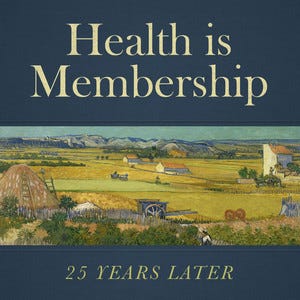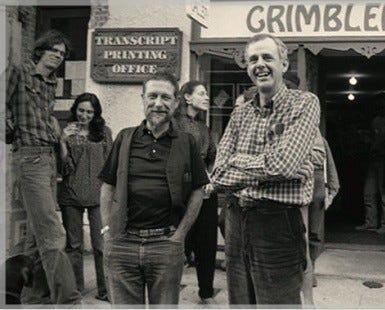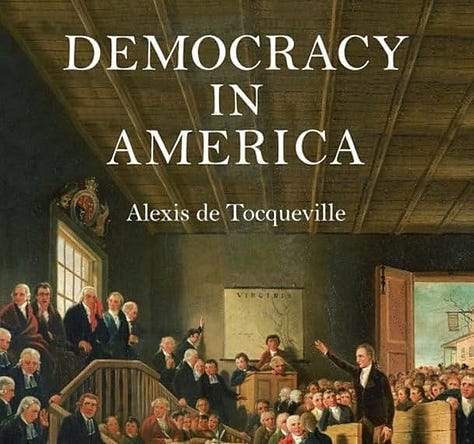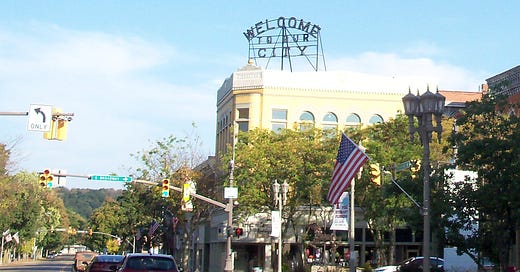How cities can cultivate a sense of "membership" among their residents
Introducing “City Membership,” a new toolkit from the Democracy Policy Network and Connective Tissue
This week, we’re teaming up with
and the Democracy Policy Network to release a new toolkit on how cities and towns can cultivate a sense of membership among their residents. You can access the full toolkit here. In the essay below, we explore the potential of this “city membership” and, drawing from the toolkit, we highlight what municipal governments and community groups can do to begin renewing membership in their communities.In recent years, much has been made of our need for a pseudo-therapeutic sense of “belonging”—that is, emotional connection, inclusion, and acceptance in our relationships. We’ve been told we have a crisis of belonging in our workplaces, our schools, and our communities. This may very well be true: many individuals and groups do feel disconnected, excluded, and rejected throughout American life.
But this emphasis on belonging may obscure a deeper truth: beneath this so-called crisis of “belonging” is a crisis of “membership.” Whereas belonging can be read as an individual feeling that passively arises in us, membership is a type of communal relationship into which we are invited and to which we are asked to actively contribute. Membership can be seen as a form of deep belonging: it’s being such a part of a community that we feel responsible for honoring its past, stewarding its present, and co-creating its future. When this sense of membership is cultivated, we go beyond being consumers, clients, and constituents of the world around us—and, instead, become collaborators, citizens, and caretakers of it.
Communitarian sages like Kentucky poet and essayist Wendell Berry have implied that the bulk of the project of rejuvenating community life might simply involve reviving a sense of membership in our various social systems. The task at hand, Berry and his followers argue, is to transform our systems of education, health, business, religious observance, governance, and conservation (among others) from sites of individual resource allocation into venues for communal membership in deeper, larger wholes. The poet Gary Snyder, a famed correspondent with Berry, writes beautifully on the idea that the best path toward environmental conscientiousness is the holistic process of “reinhabitation”: becoming a member of your bioregion, by learning about and developing a mutual relationship with the natural and social world around you.



In America today, many of us have retreated so far into our private lives and feel such a lack of agency that membership is the exception rather than the rule. If a sense of membership still exists in America, it exists in our houses of worship, our community groups, and our families. What’s prominently missing is the sense of “civic membership” or “city membership”—towns and cities seeing themselves as an extension of associational life, a membership of which residents also see themselves a part.
It wasn’t always this way: Indeed, French writer Alexis de Tocqueville viewed membership as a defining quality of the everyday democracy of America’s towns and cities. For much of our history, cities have viewed cultivating a sense of civic membership in their communities as a core part of their obligation to local residents. Residents, the idea goes, are not just taxpayers, political constituents, public service recipients, and law-abiding neighbors—they are also members of the city. When this sense of membership is successfully cultivated, residents are inspired to take more active roles in public life and in the care of their neighbors, common spaces, and shared local future. This, in turn, results in good local outcomes: more good ideas proposed and implemented, more neighbor-to-neighbor care, more vibrant public projects and events, improved public safety and health, less corrupt government, and more functional public services.
We’re at the start of a generational cycle to renew civic life in the United States, and part of the answer, we believe, involves renewing our sense of membership in the places we live. This is the responsibility of everyone—neighbors, community groups, and local governments alike. But cultivating this sense of membership to place will involve both relearning practices we have forgotten and imagining civic possibilities anew.
That’s why we at Connective Tissue (Sam) and the Democracy Policy Network (Pete) are publishing a new toolkit on how municipal governments and community groups can regenerate membership in their local communities. The toolkit draws on elements of the Connective Tissue Policy Framework and past Connective Tissue newsletters to begin defining what’s possible for place-based membership and provide tangible examples of what it looks like in practice.
We don’t see city membership as a static experience. Rather, we see it as a dynamic life cycle that involves welcoming newcomers, deepening participation for neighbors, and fostering an alumni experience.
This life cycle of city membership begins with welcoming. When we enter a new place (or enter an old place anew), we often find ourselves disconnected from our past routines, community institutions, and social networks. As a result, we’re often left asking: “Where do I begin?” By intentionally prioritizing the welcoming of newcomers—whether through the support of welcoming liaisons, welcome kits, orientations, activities fairs, or welcoming microgrants—local governments and community groups can help new residents answer that question and begin cultivating their sense of membership soon after they arrive. Several community groups already run community-wide initiatives to promote welcoming. For instance, the newly formed Chamber of Connection is hosting “Welcome Days”—a cross between an orientation, activities fair, and party—to help welcome newcomers to Seattle. Falls Church Forward has created their own welcome kit to help new neighbors connect with one another and local civic life in Falls Church, Virginia. These types of warm welcomes, as simple as they seem, help new residents experience and believe in the possible pathways toward deeper membership.
Cultivating city membership isn’t just about welcoming; it’s a year-round process that involves boosting civic opportunities and deepening participation for current residents. This requires basic municipal infrastructure, starting with the creation of personnel roles dedicated to membership, such as a municipal community membership director or a membership committee. An initial act for such new leaders could be performing a civic census by compiling and publicizing a directory of local civic groups. To support these groups, city leaders can work to increase the number of accessible meeting spaces in town, as well as launch a unified space reservation system for the city. They can also promote a culture of neighborhood membership within their cities: they can build community microspaces where neighbors can come together (e.g., micro-gardens, micro-cafes), offer microgrants to neighborhood gatherers like Boston’s Block Party Initiative, and formalize neighborhood leadership programs, such as D.C.’s Advisory Neighborhood Commissions. This type of holistic approach activates the city, its neighborhoods, and its associational life to be a more accessible and participatory ecosystem for membership.
City membership shouldn’t end when residents move away. Instead of treating past residents with an orientation of “out of sight, out of mind,” communities have an opportunity to approach them as “alumni” to be engaged. Here, places can take a page out of the college playbook: they can host annual civic homecoming weekends, create place-based alumni groups, and even establish halls of fame for current and alumni residents. This isn’t a new idea; several cities and towns have been treating past residents as alumni for centuries. For instance, Old Home Week is a tradition dating back to 19th century New England, where municipalities “invite former residents—usually individuals who grew up [there] as children and moved elsewhere in adulthood—to visit the ‘Old Home.’” These Old Home Weeks are essentially town reunions and major civic festivals in the communities that host them (see Greencastle, PA, Freedom, NH, Williamsville, NY, and Prince Edward Island).
Such alumni experiences could help former residents forge a renewed connectedness to people and place while renewing their spirit of participation. By re-engaging former residents to continue contributing to their past homes, this local investment in alumni experiences helps complete the life cycle of civic membership. Instead of approaching membership as a temporary experience, membership becomes a lifelong affiliation.
Cultivating a sense of city membership among residents is not a mechanical process—and there is definitely no single, “silver bullet” intervention that instantly transforms an isolated collection of residents into a connected community of members. Rather, it takes the slow, diligent work of continuously inviting people into deeper connection with the place they live.
Fortunately, whether any given policy, program, or strategy advocated for in this toolkit is implemented or not, the very act of prioritizing membership can spur towns and cities to imagine new possibilities for approaching civic life. What may start small with a block party or welcome kit can evolve into civic opportunities that were previously unimaginable.









What a seriously awesome resource! Thank you for putting this together, and sharing all of the real examples from around the country too.
I'm curious — how do you think about the role that local online spaces like town/city-wide Facebook groups, Discord servers, or subreddits (things like "[City] Friends & Neighbors" or "[City] Bulletin Board") play in this whole vision? There may be some challenges with these kinds of spaces being run by a govt department or employee, but maybe there are opportunities for funding/micro-grants, or other types of collaboration? It strikes me that these can be really powerful, and a force multiplier for recruiting & getting the word out for many of the other things in the toolkit.
Ban gas powered leaf blowers